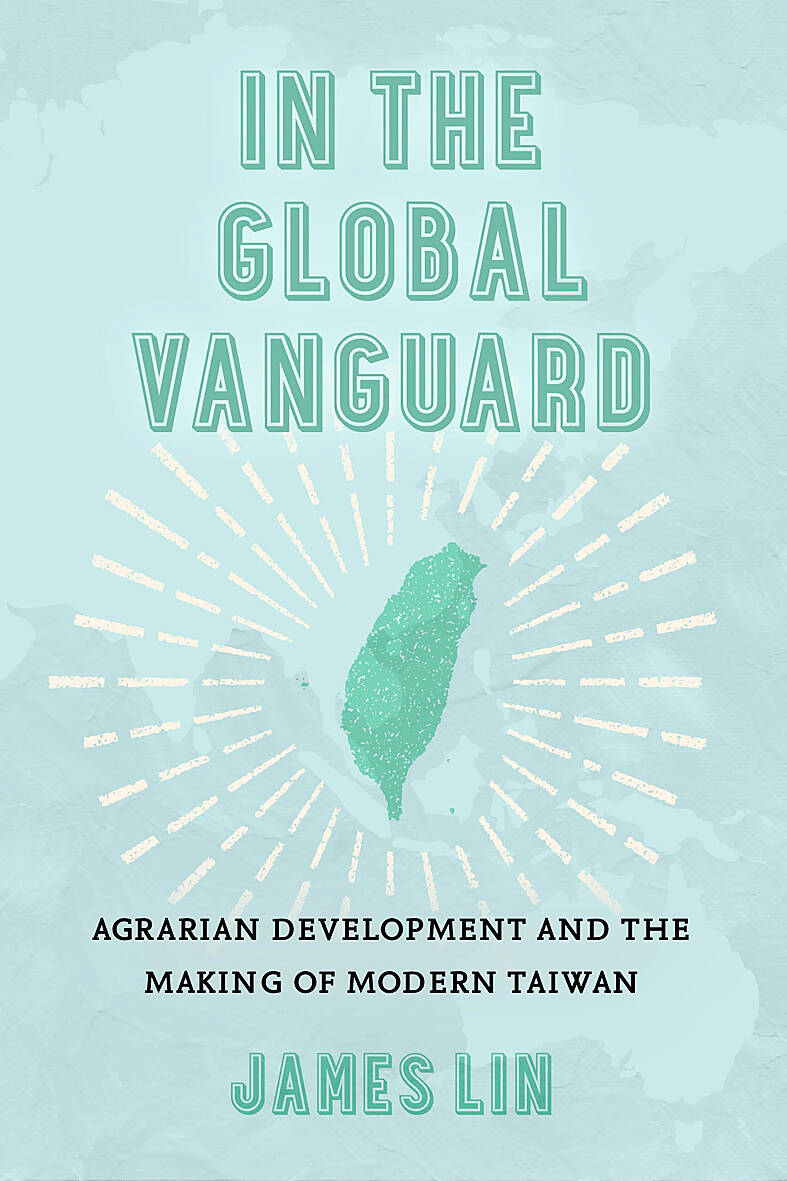Development assistance rarely comes without strings. Whether its access to mineral wealth, debt-trap diplomacy or demands for good governance, the creditor expects something in return. In Taiwan’s case, since the transition from recipient to donor nation in the late 1950s, pragmatic politics have been at play.
Operation Vanguard — the export of the “Taiwan model,” first to the Republic of Vietnam and then throughout Africa — was ostensibly a trailblazing paradigm of South-to-South cooperation. This was premised, as James Lin argues in this meticulously researched book, on “the discourse of Third World solidarity and commonality through non-whiteness and the strength of non-Western knowledge and methods for achieving postcolonial strength.”
The language employed by the Republic of China (ROC) figures overseeing Vanguard — career diplomats such as Yang Hsi-kun (楊西崑) — emphasized shared values, writes Lin.

Quoting from a 1969 letter by Yang, later ROC vice minister of foreign affairs, Lin notes that, as part of his “tireless politicking,” Taiwan’s own “Mr. Africa” foregrounded “industriousness and frugality [克勤克儉]” as “traditional virtue[s] of us Chinese people,” arguing that “African countries were just like ours, we are all developing countries.”
These appeals to mutual mores were self-interested, underpinning a “development diplomacy” strategy that co-opted African elites in the battle to extricate developing nations “from the grasp of Communism.” It was, writes Lin, Taiwan’s own “technopolitical version of a mission civilisatrice.”
The fraternal overtures “obscured the ultimate goal of the Vanguard missions, which were fundamentally political in nature — to secure votes for the ROC in the UN.”
As Taiwan’s international standing foundered, the Chinese Nationalist Party (KMT) government used its land reform and agricultural science experience to woo newly independent African states.
The achievements of Taiwan’s agriculturalists were not insignificant. In Vietnam, from 1959 onward, over 700 varieties of rice were distributed by the Chinese Agricultural Technical Mission (CATM) — as the Taiwanese teams were collectively known — to regional experiment centers for field trials.
EXPORTING THE MIRACLE
Particularly impressive were yields of the “miracle rice” IR-8, crossbred from Indonesian Peta and Taiwanese dee-geo-woo-gen (DGWG, 低腳烏尖), which takes its name from a spontaneous mutation of woo-gen rice. The creation of the semidwarf IR-8 occurred at the Philippines-based International Rice Research Institute (IRRI) in the early 1960s, and the “miracle” was that “short and stocky” stalks stopped IR-8 from toppling and becoming submerged.
At first, IR-8 suffered from the opposite problem in regions of Vietnam where higher rainfall fully submerged the stalks, but the CATM adjusted planting and harvesting seasons to avoid this, almost doubling yields per hectare.
Across Africa, by 1969, dozens of demonstration farms had been established, often boosting yields, through a five-step system of land reclamation, experimentation (on environmental conditions, planting methods and fertilizer levels), demonstration, training and extension. This last stage — having local farmers adopt new practices — was integral to the Taiwan model.
A SEMBLANCE OF DEMOCRACY
Another component was the promotion of farmers associations. While the KMT built upon this inheritance from the Japanese era, it had experience from the land reform program that had begun in China, under the Joint Commission for Rural Reconstruction (JCCR). This was funded by US-based agencies such as the International Cooperation Administration, a predecessor to the United States Agency for International Development (USAID). In Taiwan, associations extended credit, distributed fertilizer and provide a semblance of “democracy.”
Backed by studies from Cornell University scholars, who had assisted with crop improvement in China from the early 1920s, figures such as JCCR Commissioner Shen Tsung-han (沈宗瀚) and Chang Chih-wen (章之汶) argued that farmers associations inculcated democratic principles. While the text is thin on examples of this working in practice, Lin highlights elections for US-inspired community-based initiatives known as 4-H (hand, heart, head and health).
Votes for chairmanship of these clubs, which focused on hygiene, work ethic and education featured in promotional videos. A magazine called Harvest included didactic cartoons, “inspirational news stories and fictional accounts that read like morality tales.” These “served as propaganda to champion the benefits of state-led agricultural development and to bring back to rural populations news of successes across Taiwan and elsewhere in the world.”
FINDING THE MIDDLE GROUND
Another US-mediated influence was Georgism — the single land tax philosophy of political economist Henry George — “a middle ground between ruthless laissez faire capitalism and the radical communism of Marx.” Combined with loose readings of Sun Yat-Sen’s (孫中山) Three Principles of the People, Georgism meshed with Taiwanese land reform as based on the execution of contracts, not landlords, to paraphrase chapter two’s title. While this appealed to conservative regimes in Asia and Africa, the export of the Taiwan model was ultimately a failure. It could not prevent the fall of the Republic of Vietnam to communism or achieve change in Africa because it ignored politics. There was a contradiction at the heart of Taiwan’s development diplomacy that Lin, citing anthropologist James Ferguson, extends to development assistance in general: The focus on modernity, technology and science as transcending politics was “a narrow, apolitical solution in a complex political world.” Fundamental change, writes Lin, “more often than not required not just technical capability but also political will and reform.”
COUNTERPRODUCTIVE METHODS
Small teams of “straw hat diplomats” couldn’t replicate their agricultural miracle in countries many times the size of Taiwan. Instead, they were confined to tiny demonstration farms with limited possibility of extension. This often “inspired counterproductive jealousy” among the haves and have-nots.
Other barriers included local tastes or a gap between what was offered by top brass and local conditions. In Chad, technicians found the arid environment unsuited to the paddy cultivation promised by Taiwanese diplomats and proposed switching to sugarcane. According to career Vanguarder Peng Rui-duan, this was nixed by French agriculturalists who feared a threat to tangerine exports from their old colony.
TWO-WAY PROCESS
With the ROC’s expulsion from the UN in 1971 and the steady loss of official diplomatic allies, development was pared back and refocused on health and infrastructure — diabetes in the Pacific, bridges in Central America. Such assistance remains politically motivated, Lin writes.
So, what is the value of highlighting this little-documented history? Aside from personal perspectives from Vanguard’s blue-collar personnel, which Lin collected through years of interviews and research, there is Taiwan’s importance to the wider history of development, and the role development still plays in diplomacy.
The Chinese Nationalist Party’s (KMT) efforts to construct a “sociotechnical imaginary of Taiwan as leading a vanguard of the developing world” is another fascinating angle. “Development,” Lin writes, “is as much about the developer as it is about as the developed.”

The Taipei Times last week reported that the rising share of seniors in the population is reshaping the nation’s housing markets. According to data from the Ministry of the Interior, about 850,000 residences were occupied by elderly people in the first quarter, including 655,000 that housed only one resident. H&B Realty chief researcher Jessica Hsu (徐佳馨), quoted in the article, said that there is rising demand for elderly-friendly housing, including units with elevators, barrier-free layouts and proximity to healthcare services. Hsu and others cited in the article highlighted the changing family residential dynamics, as children no longer live with parents,

It is jarring how differently Taiwan’s politics is portrayed in the international press compared to the local Chinese-language press. Viewed from abroad, Taiwan is seen as a geopolitical hotspot, or “The Most Dangerous Place on Earth,” as the Economist once blazoned across their cover. Meanwhile, tasked with facing down those existential threats, Taiwan’s leaders are dying their hair pink. These include former president Tsai Ing-wen (蔡英文), Vice President Hsiao Bi-khim (蕭美琴) and Kaohsiung Mayor Chen Chi-mai (陳其邁), among others. They are demonstrating what big fans they are of South Korean K-pop sensations Blackpink ahead of their concerts this weekend in Kaohsiung.

Oct 20 to Oct 26 After a day of fighting, the Japanese Army’s Second Division was resting when a curious delegation of two Scotsmen and 19 Taiwanese approached their camp. It was Oct. 20, 1895, and the troops had reached Taiye Village (太爺庄) in today’s Hunei District (湖內), Kaohsiung, just 10km away from their final target of Tainan. Led by Presbyterian missionaries Thomas Barclay and Duncan Ferguson, the group informed the Japanese that resistance leader Liu Yung-fu (劉永福) had fled to China the previous night, leaving his Black Flag Army fighters behind and the city in chaos. On behalf of the

I was 10 when I read an article in the local paper about the Air Guitar World Championships, which take place every year in my home town of Oulu, Finland. My parents had helped out at the very first contest back in 1996 — my mum gave out fliers, my dad sorted the music. Since then, national championships have been held all across the world, with the winners assembling in Oulu every summer. At the time, I asked my parents if I could compete. At first they were hesitant; the event was in a bar, and there would be a lot